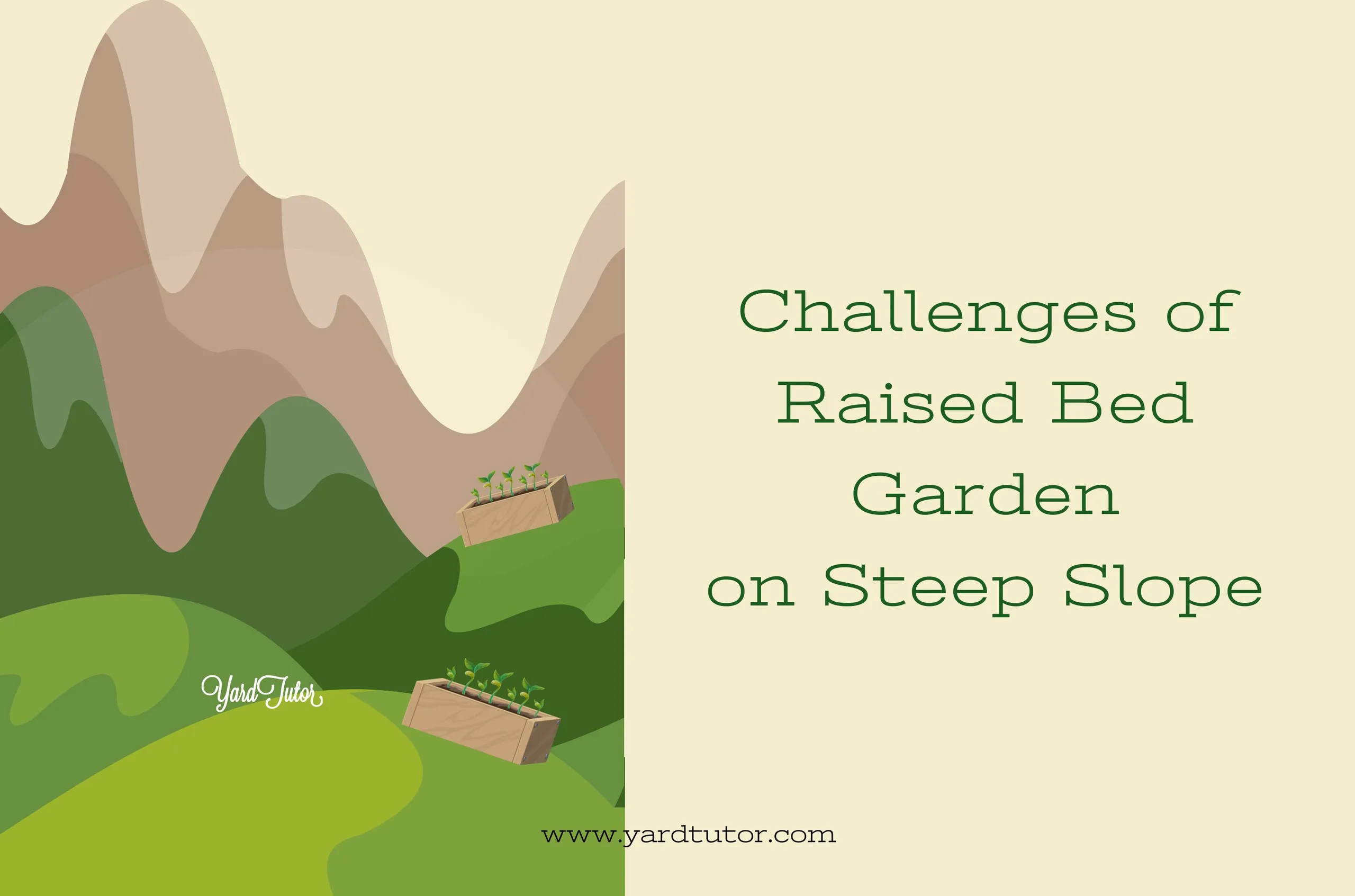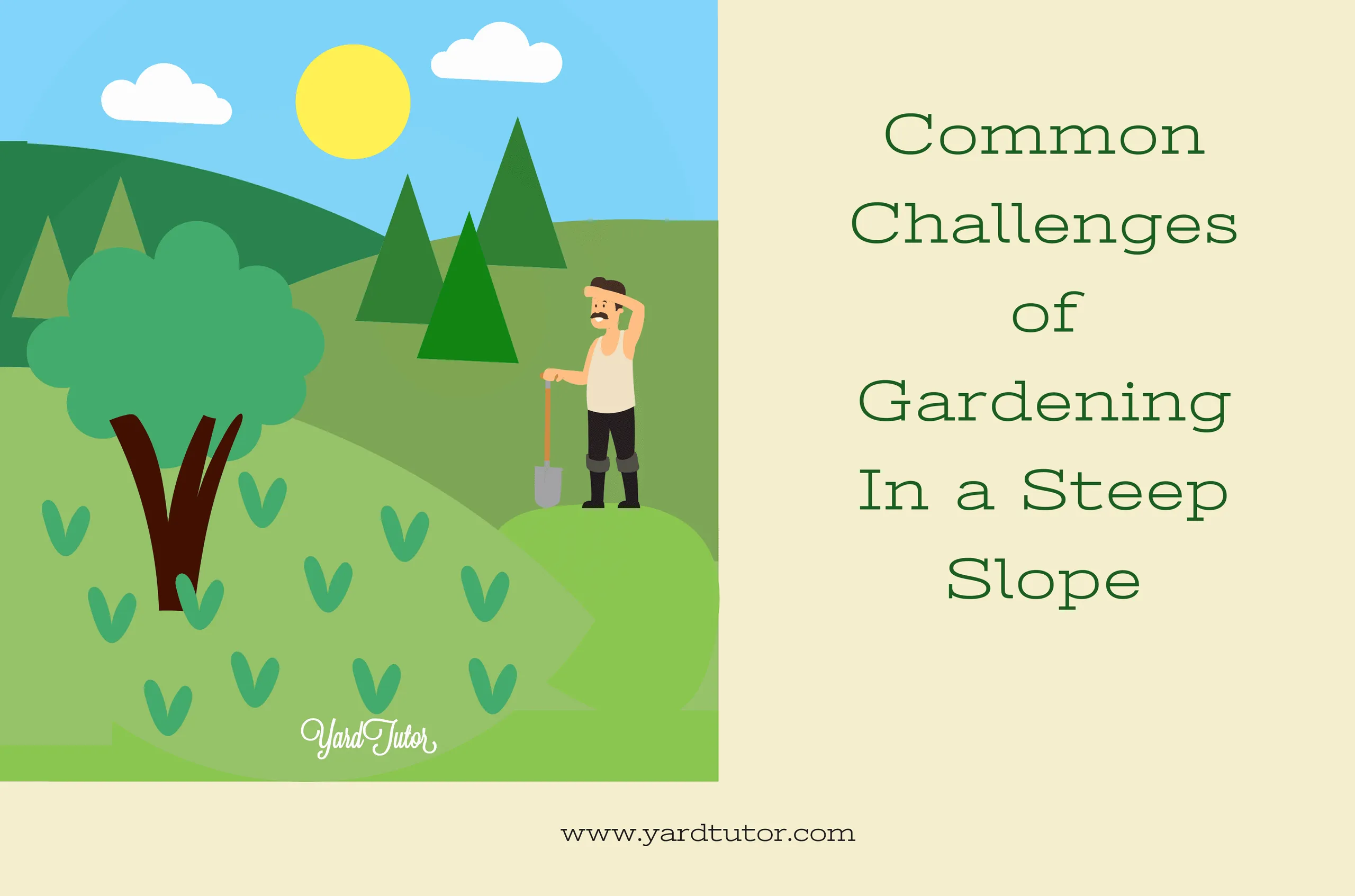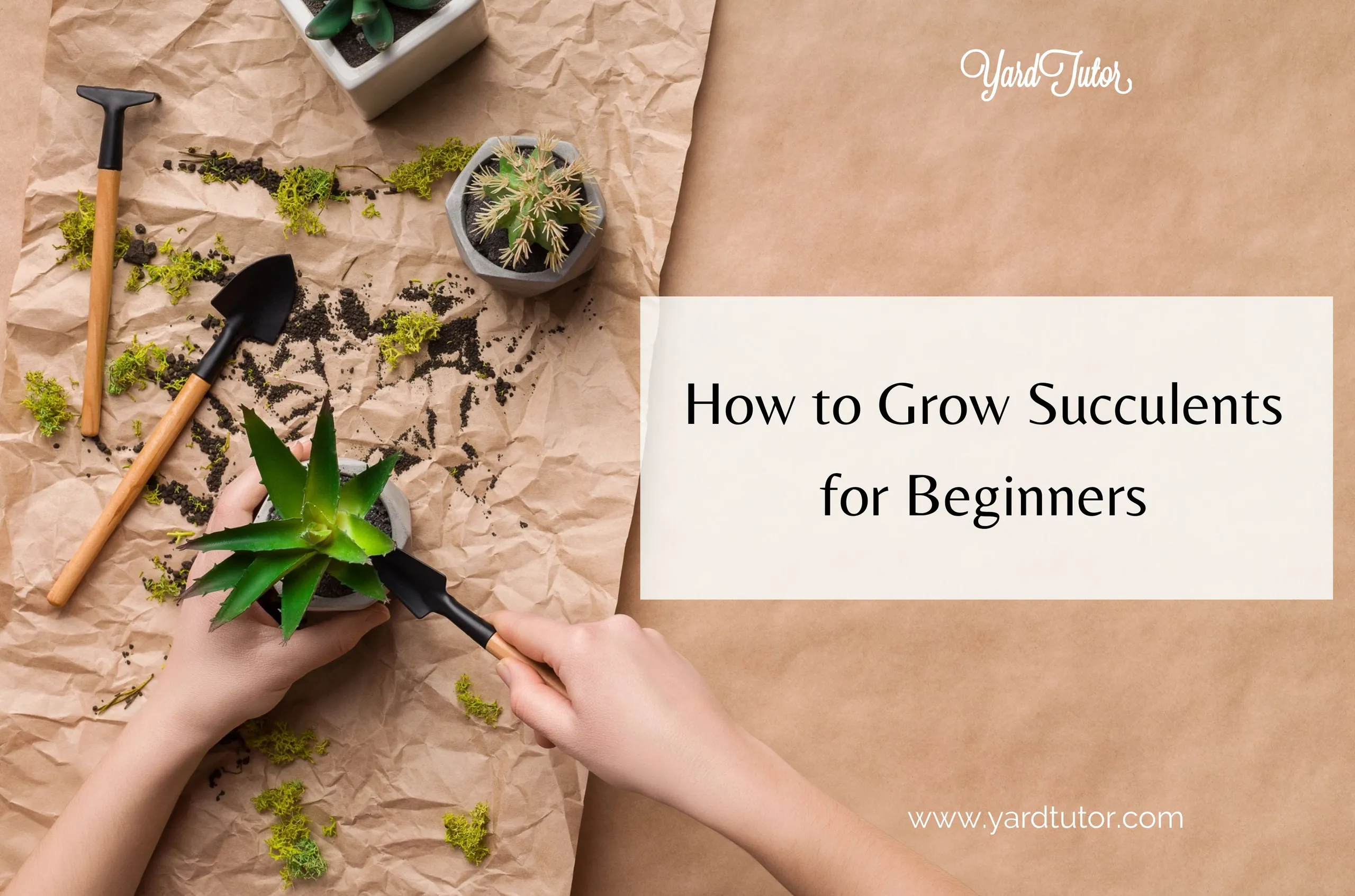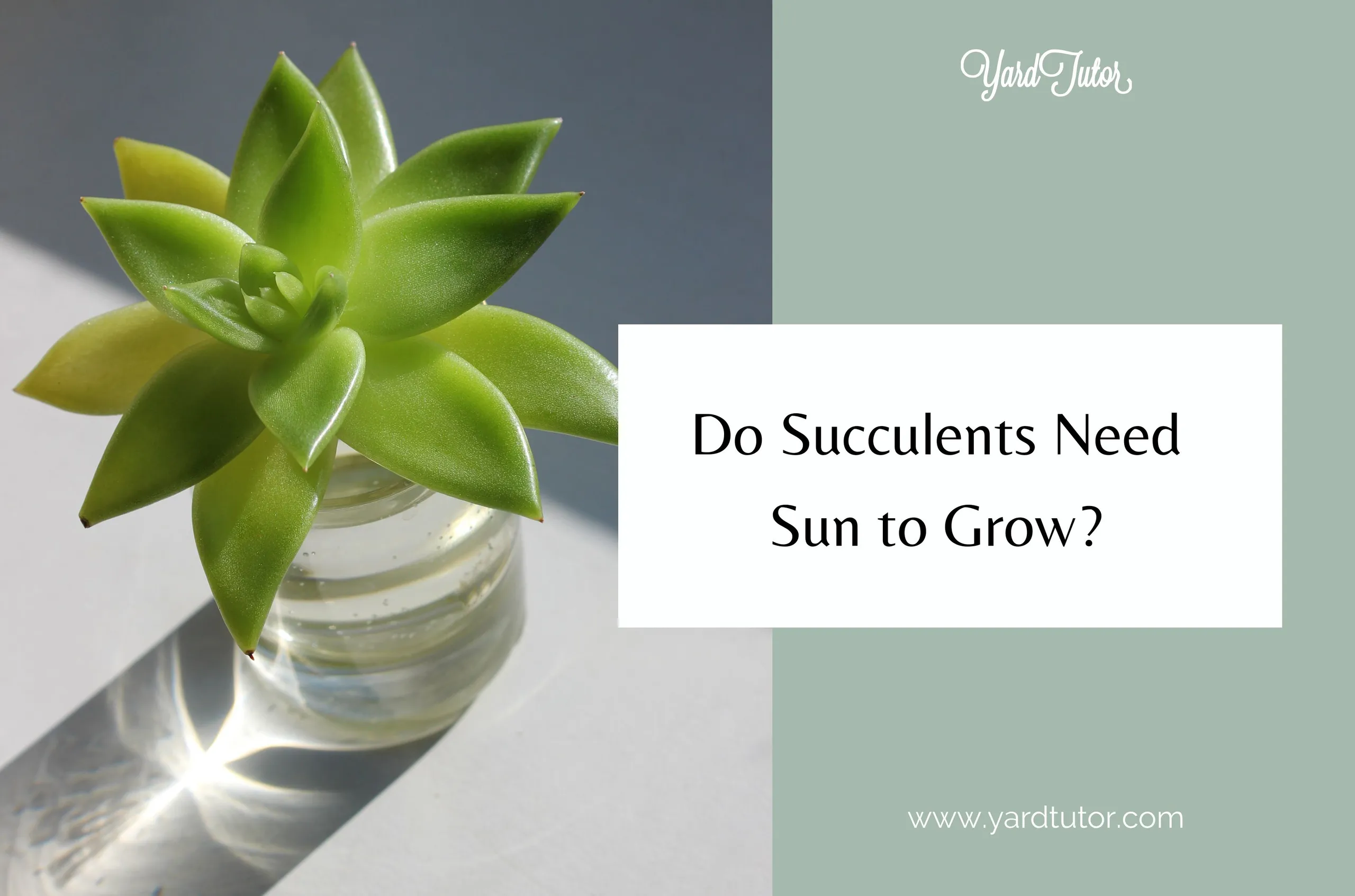How to Start Raised Bed Gardening- Part 1
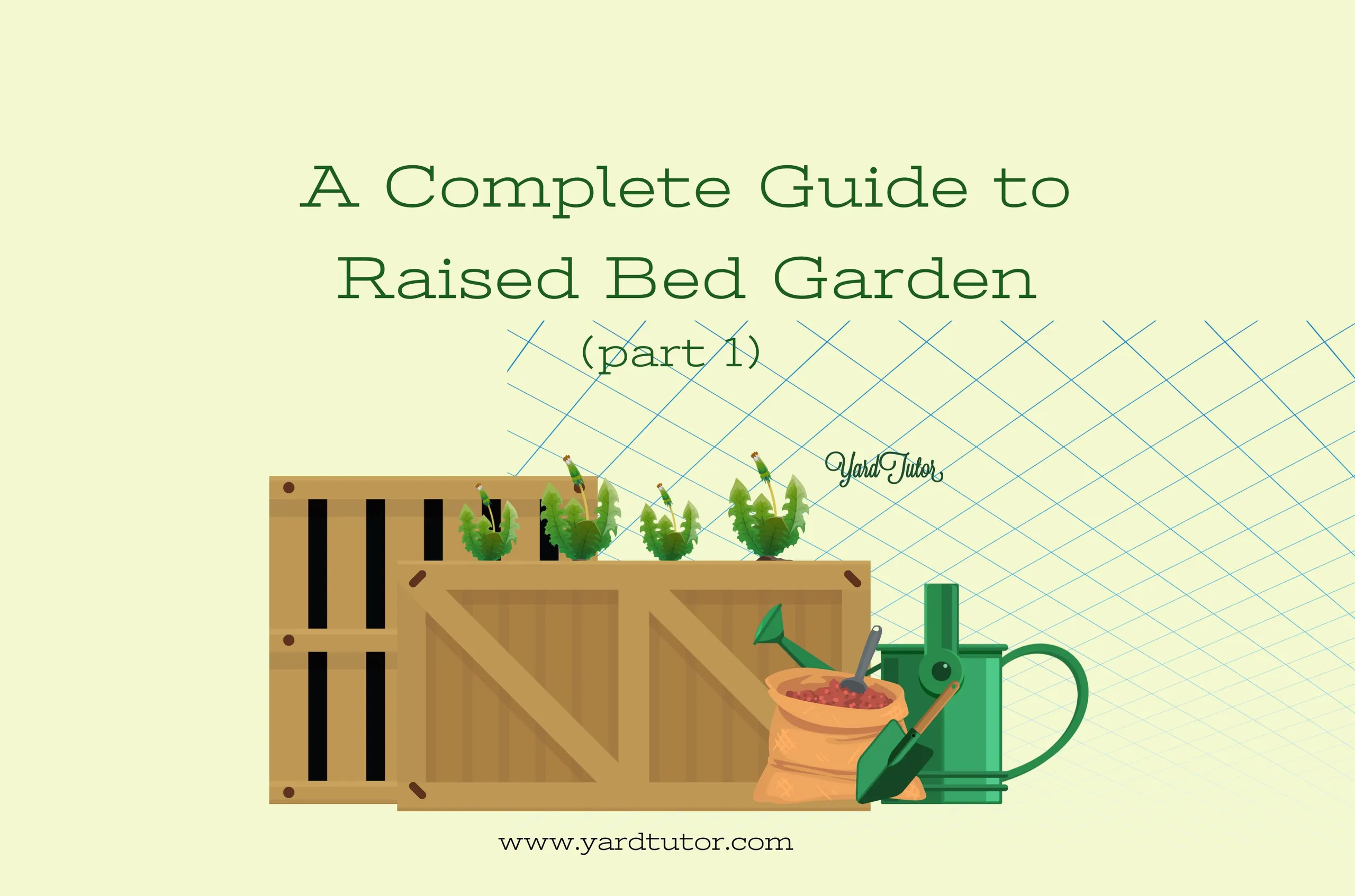
The history of gardening stretches back to the very first time humans decided to plant seeds intentionally. Ancient humans abandoned their nomadic existence and began farming, which marked the dawn of civilization. This was a significant period in human history, but present gardeners are more intrigued by the later eras when people started experimenting with garden designs.
Today, gardening is quite popular in many countries. For example, in the United Kingdom, 40% of the overall population actively participates in gardening, whereas in the United States, 117 million people, or one in every three, partake in gardening.
Modern-day gardening is also beneficial in a variety of ways. It not only improves soil quality but also benefits backyard wildlife. Additionally, gardening has many positive effects on both the mental and physical health of people. Even a little bit of gardening, two or three times a week, can help with well-being and stress reduction. Gardening has also been demonstrated to reduce the risk of dementia and to be a therapy for individuals who currently have it.
Due to its popularity and beneficial characteristics, gardening now offers a broad range of designs, types, and techniques to suit everyone's needs and choices. Among them, raised bed gardening is a popular gardening method.
Key Takeaways:
- Raised bed gardening involves growing plants in soil elevated above the ground, enclosed in a frame.
- Raised bed frames can be made from wood, metal, concrete, stone, or plastic.
- Beds should be narrow enough for easy access and placed in sunny areas.
- Raised bed gardening has many benefits, including better drainage, less soil compaction, fewer weeds, and a longer growing season.
- Raised beds are ideal for small spaces and easier gardening for those with mobility issues.
- Gardeners can choose from various raised bed types based on budget and space.
What is Raised Bed Gardening
The term "raised-bed gardening" refers to a form of gardening where the soil is elevated above the ground and is typically enclosed with a frame. The frame prevents the soil from spilling out and keeps it in place. The height of the beds can be anywhere from a few inches to considerably much higher. The enclosure or the frame for the bed can be built with wood, rock, plastic, concrete, stone, or metal. It is best to choose a material that blends nicely with the surroundings.
The shape and size of these beds are highly customizable. The ideal raised bed is narrow enough that the center can be reached from either side of the bed. The depth of these beds is determined by the type of plant that will be grown on them.
A raised bed garden is often built in a sunny spot for lighting needs of the plants. Native soil or topsoil is rarely utilized in raised bed gardens. The soil used in the beds is most of the time nourished with compost.
Why Start A Raised Bed Garden
Raised bed gardens have both advantages and disadvantages. But if you're new to gardening, the building process of raised beds might seem tricky. So, maybe you’re wondering why YOU should start a raised bed garden.
To begin with, a raised bed garden isn't any more difficult to build and maintain than other styles of gardens. Raised bed gardens are popular due to the numerous benefits they offer. The advantages raised garden beds offer include:
- It requires less space than conventional gardening methods.
- It prevents foot traffic entirely, which keeps the soil in your garden from compacting. Hence raised garden beds are more fruitful than ground-level ones because of less soil compaction.
- A raised bed garden requires less upkeep.
- Weed infestation is much less likely to happen with this style of gardening.
- It also offers a longer growing season.
- At a suitable height, these beds can make gardening easier for people in wheelchairs or for gardeners who find it difficult to bend over.
- This form of gardening allows for better water drainage.
- For those who have no soil, or whose soil is compacted, rough, or polluted, it offers an ideal planting foundation.
- Raised gardens are often pest-free.
- In raised beds, the soil is typically much warmer, enabling one to plant earlier than in ground-level flat beds.
Do the Perks of Raised Beds Offset the Costs?
But what about the cost? The cost of constructing a raised bed in garden depends on the material used, the size, the drainage system, and a few other variables.
The size is also important since larger beds require more materials to construct than smaller ones.
Beds made of high-quality materials, such as oak wood or plastic, may survive for decades, but the initial investment to manufacture the beds might be considerably high. Although you can purchase inexpensive untreated lumber, doing so could cause the wood to rot and increase the expenses even more. Constructing the bed frames out of metal or cement can be quite difficult and may require professional assistance.
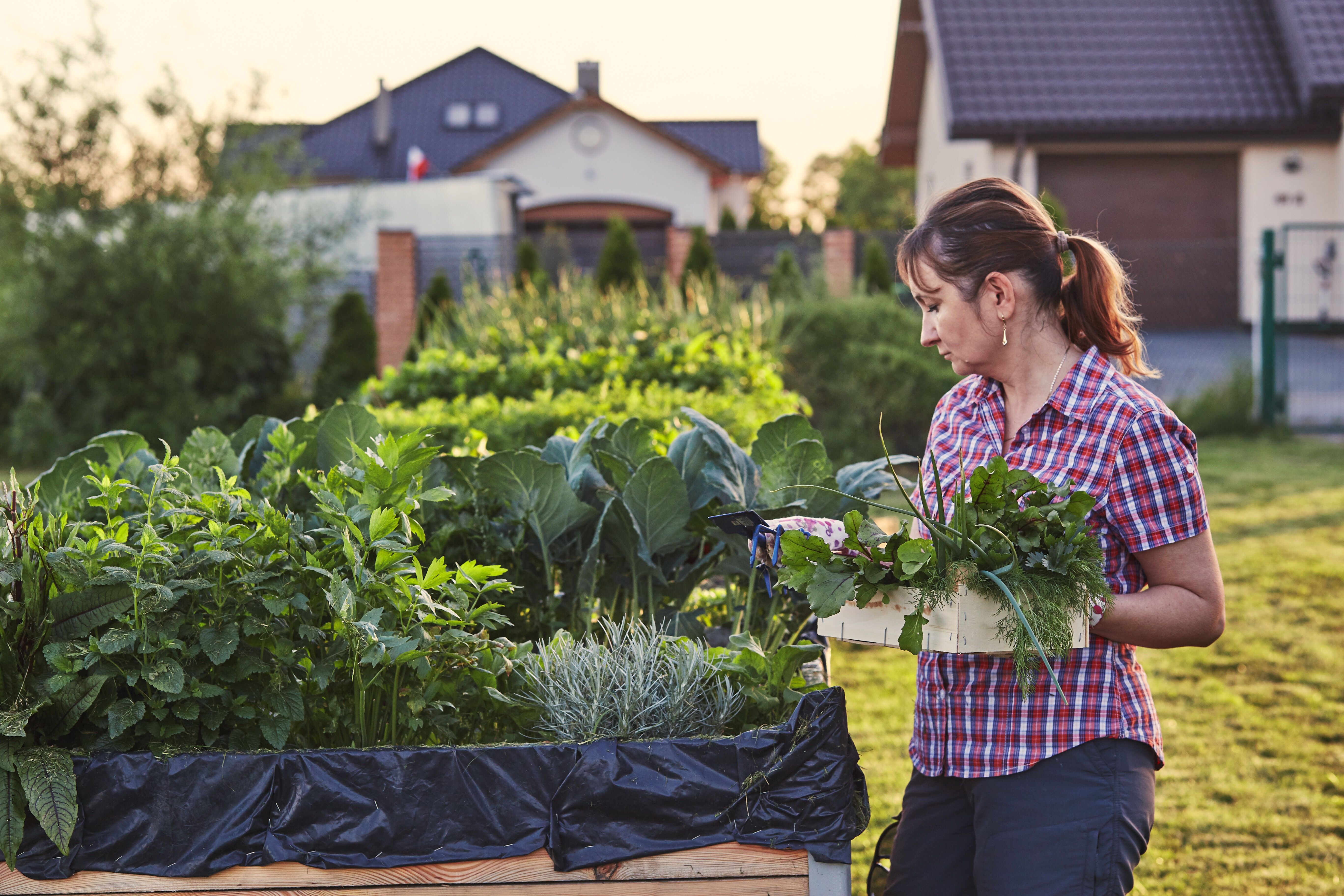
Not to mention, for these beds, drainage is crucial. It is required to avoid complications regarding root rot. Beds placed straight over the ground don't require any drainage system, but if your raised bed has a closed bottom, you'll need an appropriate water drainage system. Luckily, this can be done simply by making draining holes at the bottom, costing little to nothing. Additionally, if you have to buy separate soil, the cost increases much more.
Yes, raised bed gardens often have greater upfront costs. This form of gardening, however, also offers extra benefits that other types don't, in addition to lowering long-term expenditures.
Planning Your Garden Area
You need to consider a few things before purchasing the materials needed to build a raised bed in garden. The first step is creating a layout design for your raised bed garden. You can use various online tools to help you with your garden planning.
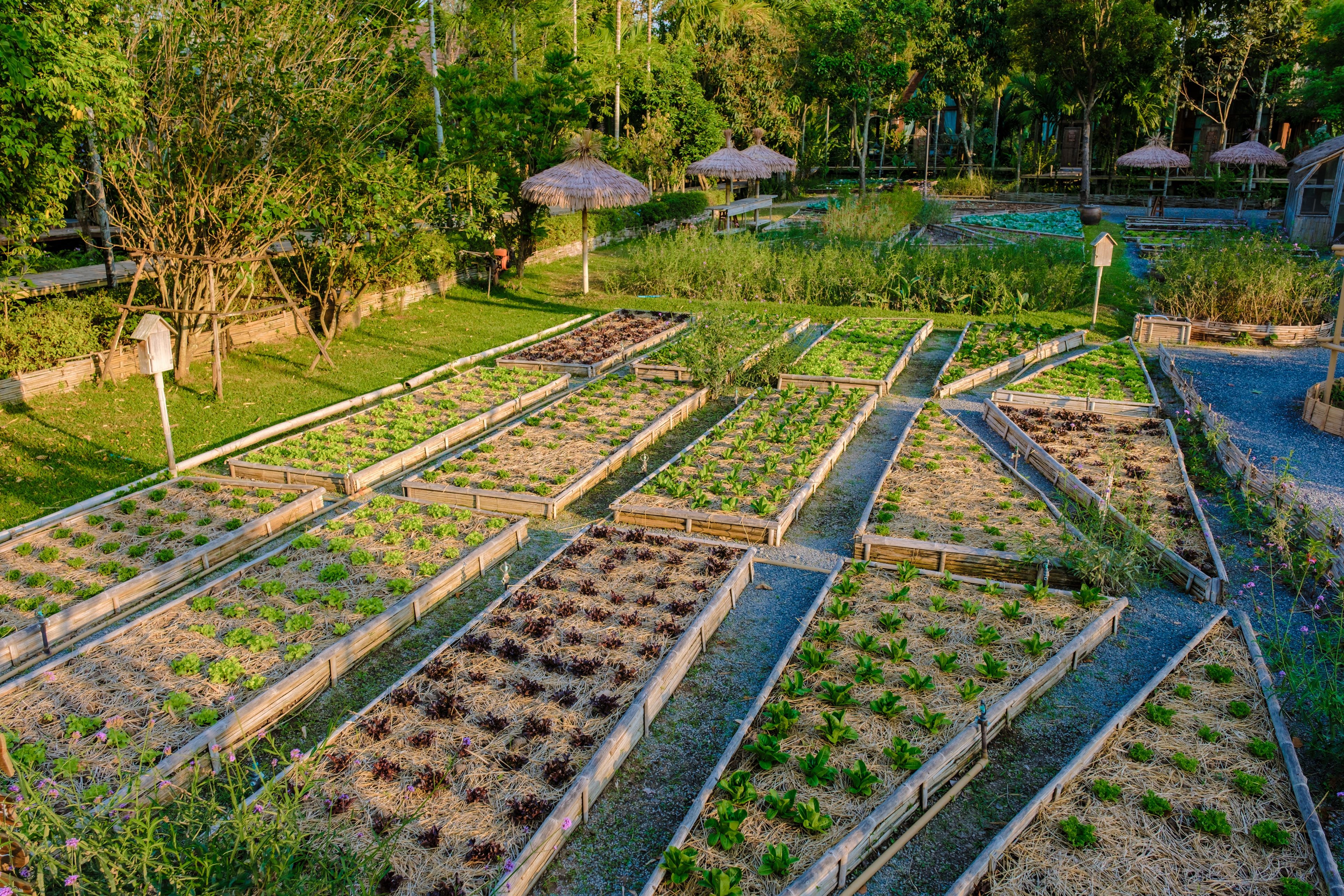
As raised beds need some room between them to build garden walkways, so the beds can be easily accessible, you need to consider if you have enough space. Also, before erecting the beds, you must ensure that they have convenient access to a water source. You must install a garden hose if you don't have access to such means. To make gardening easier, you should arrange your garden space to be close to your home as well.
Additionally, you should consider whether insects, vermin, or other critters frequent your gardening area; if so, you may need to build barriers around your garden to save it.
Where to Place a Raised Garden Bed
It's crucial to place your beds in the part of your property that receives the most sunlight since plants thrive in such settings. For this form of gardening, you need to pick a location that receives at least eight hours of direct sunlight, six hours being the bare minimum.
The beds must be placed in an area with good access to water and has some form of protection from severe wind and rain. It is recommended to avoid placing the beds where rainwater accumulates.

Additionally, raised beds should ideally be positioned on leveled surfaces. Sure, you can construct them on uneven ground, but after they are finished, the surface of the beds needs to be leveled.
Choosing Your Raised Bed
You may find many various types of raised beds in local stores. Different people have different preferences for bed type and style. You should choose a bed based on your budget and need. You may want to start with only one bed if you have a limited amount of time or area to work with. You will likely need at least 3 to 5 beds if you want to grow a lot of fresh veggies.
Additionally, keep in mind the garden plan you already created. You can also use online tools or shops to look into various types of raised beds. Many stores sell raised bed kits that make it extremely easy to construct one. If you have trouble bending over or have other disabilities, you may want to consider elevated garden beds.
All of these might seem a little too challenging to follow, so I'll walk you through the lDIY process of learning how to start raised beds.
Select the Safest Material for Your Beds
Numerous factors must be taken into account when choosing the materials for constructing the beds, including your budget, preferences, the size of the bed, and the weather conditions. While it may be tempting to use the least expensive option available, be careful when utilizing materials with a questionable origin as they could be contaminated.
Before choosing any material, keep two things in mind:
- Your crop and the materials you utilize will be situated close by. The leaves and roots will frequently come into touch with the surface of the material. So choosing an unsafe material to build raised garden bed is a no-go.
- When exposed to continuous wetness and sunshine, most materials deteriorate quite fast.
There are many options to choose from; here are some popular materials used to build raised garden beds:
Wood/Lumber
Three types of wood are used in building a raised bed in garden: raw wood, treated wood, and composite wood. Although untreated raw wood is surprisingly cheap, it rots away quickly. All untreated wood will eventually require replacement. Your surroundings and the wood type will affect the wood’s longevity. For instance, untreated cedar and redwood are highly resilient to rot, but pine wood is quite susceptible to rot.
Treated wood is processed with chemicals to protect the wood, but these chemicals may seep into the soil. Because it's unhealthy to touch treated wood without any protection, its disadvantage outweighs its benefits.
Composite wood, which is composed of recycled products, has a long lifespan. But these are not suitable for large beds, as this type of wood is prone to buckling.
Metal
Metal is a popular material for building raised beds in gardens. As galvanized metal frames don’t rust, you can worry less about the longevity of your beds. For highly humid climates, galvanized metal raised beds are a fantastic option. Most prefabricated raised bed kits are made out of metal. Elevated garden beds' supporting feet can also be constructed of metal.
Additionally, it takes high acidity and a very long period for the zinc coating on galvanized metal to erode. This implies that metallic elevated garden beds pose little to no health risk.
Prefabricated Bed Kits
A lot of gardening supply stores sell prefabricated kits for raising your beds. They are quite customizable and provide a wide range of options. The high price of these kits is their only flaw.
Concrete Block
Beds constructed using concrete blocks are extremely strong and durable. However, using such materials to build beds can be challenging and labor-intensive. They are bulky and less flexible. You won't be able to change the design or location without breaking the bed layout.
Stone
Stone is a natural material that poses no health risks. But like concrete blocks, these are also rigid, difficult to work with, and quite expensive.
Tires
For raised beds, many folks assume tires are a good substitute for other materials. It's free or cheap since you can find them lying about in the garage or the backyard.
However, utilizing tires can be hazardous to your health. Petroleum, the material that makes up the tire's rubber, degrades in the humid heat of a garden, dispersing its compounds into the soil.
Railroad Ties
Railroad ties, like tires, are not ideal to be used as bed soil enclosures even though many people do so. Creosote, which is used to make railroad ties, can leach into the earth, making the ground contaminated. Even if they seem appealing, it's best to avoid utilizing these materials.
Liners
Consider lining your bed with plastic sheets if the material you're using has a risk of its elements leaking into the ground. These sheets will function as a barrier between the soil and the bed material. But choose the sheets carefully; it is advised to go with food-grade ones.
In addition to bed structure materials, you also need some tools, including:
- A garden fork
- Shovels
- A Level
- A saw
- Plant support
Choosing the Correct Dimensions for a Raised Garden Bed
Now you have chosen your material, planned your garden carefully, and are now prepared to lay the first bed. However, the size of the beds must still be taken into account as it is the most critical part of raised bed cultivation. Raised beds, also known as raised bed planters, are available in a variety of dimensions, so it's important to make sure that each bed is suitable for your garden planning and that the style of the bed also complements your surroundings.
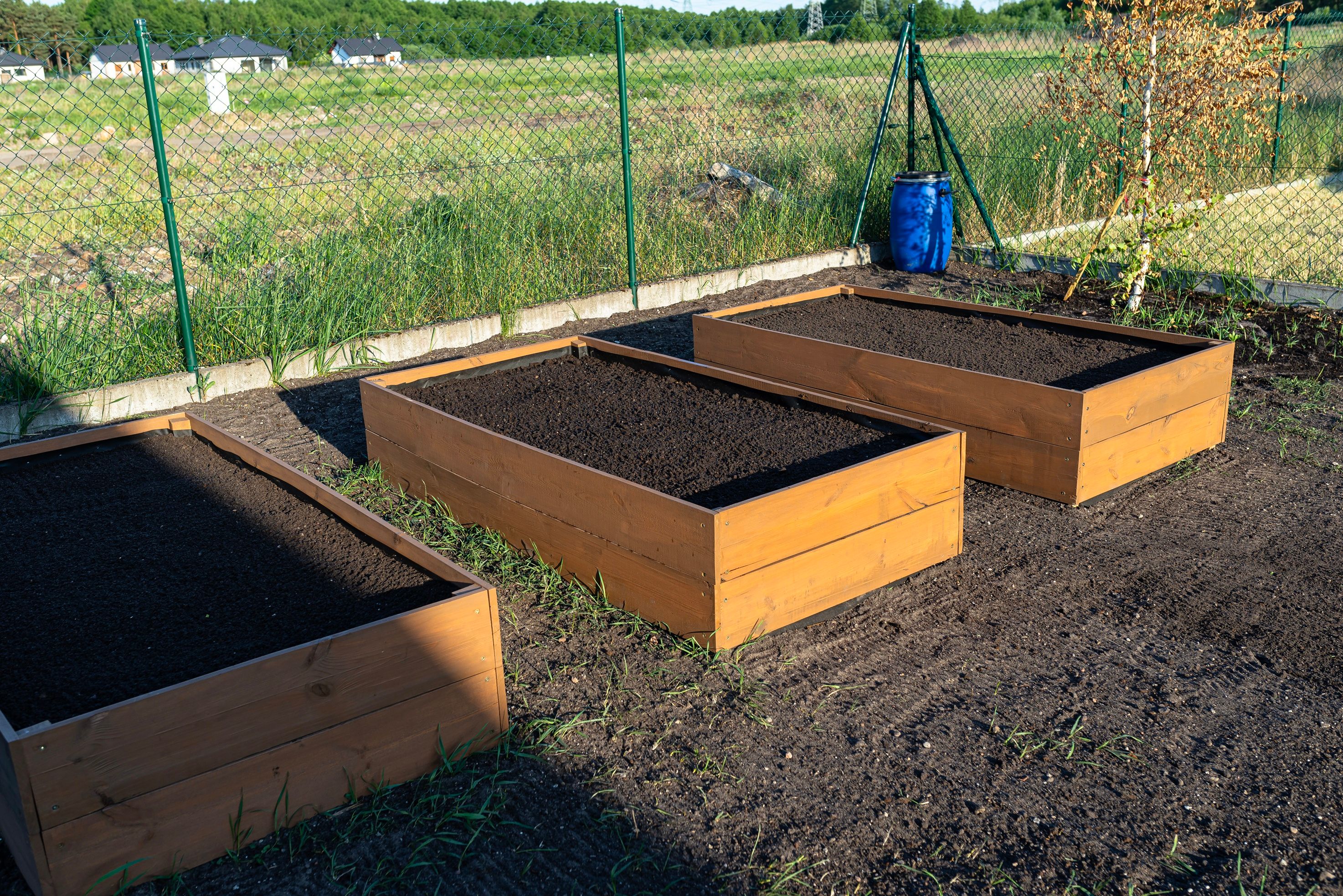
Here, we'll proceed with our examination of the bed sizes to assist you in determining which is best for your raised bed garden plants.
Size Considerations for Raised Beds
The following are some of the most crucial aspects to take into account while choosing the size of the beds:
Length
You should build the beds in the length you require. The length of the beds may be built to fit the available space. Your financial and physical resources are the only limitations in this regard. However, elevated garden beds require extra support if they are built excessively long.
Shape
For the beds, you can choose any shape you prefer, but make sure you can access the middle of the bed from both sides and the shape doesn't prevent you from doing so.
Width
The minimum width of your beds should be four feet, while three feet or less can potentially be utilized but will feel quite cramped. Plant spacing can be m ore flexible with 4 feet wide beds.
Height
Although 12 to 18 inches in height is optimal, beds as short as 6 inches can be built. The sort of plant you intend to grow will solely determine the height of the beds.
Getting the Garden Bed Area Ready
You now need to work on your garden space. The amount of work required is determined by the depth of the raised bed planter, the type of garden space you have, and the plants you intend to grow in it.
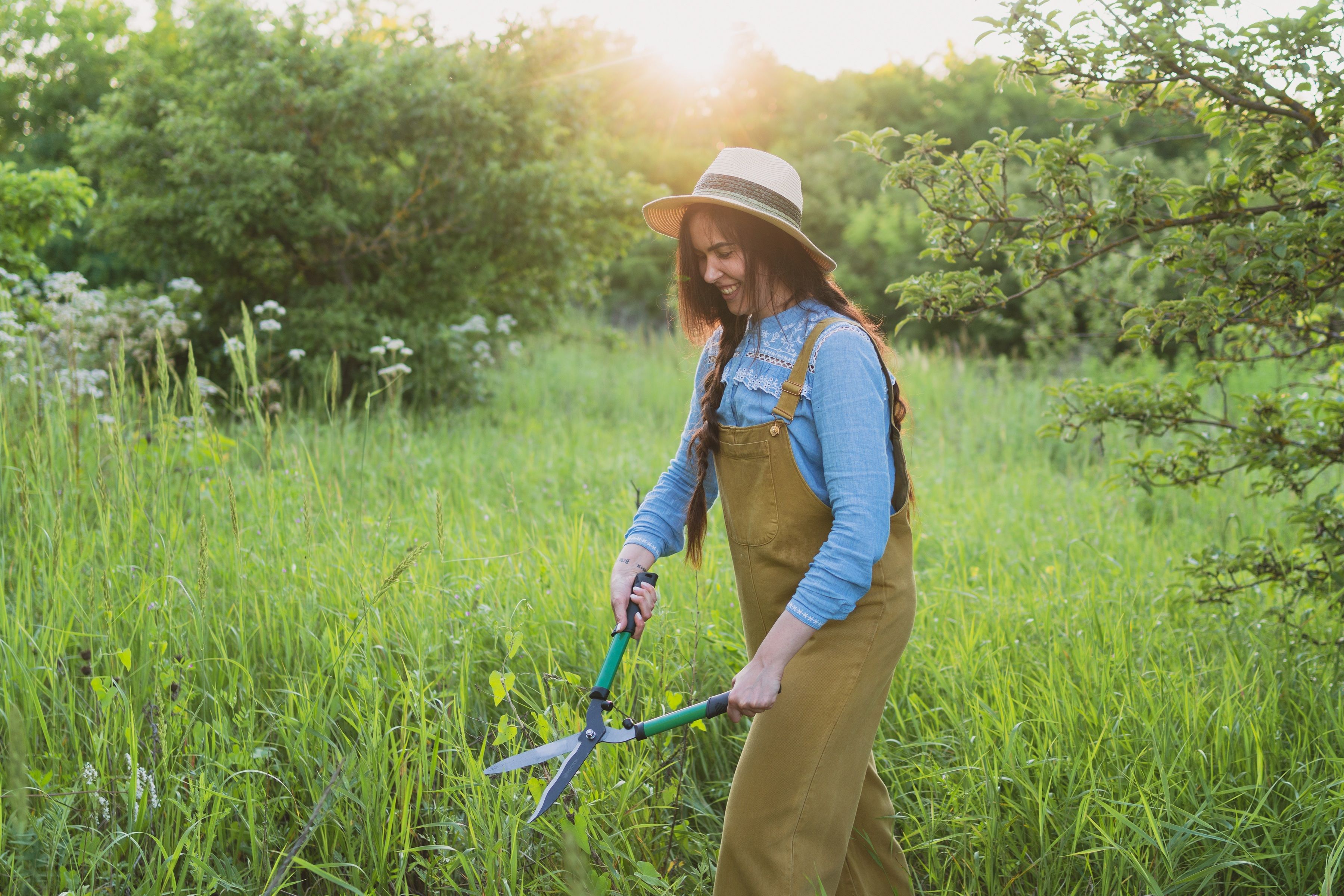
First, you have to remove any weeds, grass, and other unwanted foliage from the area. You can solarize the garden area. Solarizing is the process of heating the ground by enclosing it in transparent plastic sheets for four to six weeks. It is an excellent method for eliminating most weeds, grass, and plant pathogens. To properly solarize your garden area, you have to:
- Mark the area where you want to put your raise beds.
- Cut the grass and weeds as short as you can of that area. You may use a lawn mower to do this.
- Thoroughly water the area.
- Then use transparent plastic sheets to cover the area.
- Examine the area to determine if it is tightly sealed and whether the sheets have any holes or breaks. If required, patch the holes with tape.
- Keep in mind that the plastic sheets should be removed from the ground after four to six weeks.
In some cases solarizing the ground is not enough. The stumps may need to be removed by digging or grinding. But if you are building closed-bottom raised beds, there is no need to do so. You can also use newspaper or cardboard to cover and bury the grass to spare yourself the work, but it is not recommended to do so.
After this, you can use the area to set up your beds. If you haven't already built your bed frames, do it now. To save time and labor, you may purchase pre-assembled bed kits, but doing so will increase your budgetary expenses. It's fairly simple to construct a garden bed frame yourself. If you are using timber, all you have to do is cut the pieces to the desired sizes and hammer or screw them into position.
Remember, building a raised bed garden on the parking lot or sidewalk is also viable if you don't have a backyard or garden area. Your enclosed raised beds must have closed bottoms for this, as well as a proper drainage system. Cutting holes at the bottom is a common drainage method. Remember that the water will drain and fall on your concrete.
Bed on Uneven Ground
Of course, not all yards are made the same. Some may be perfectly flat and convenient to create raised bed vegetable garden, while others may be placed on a slope. If you have a sloping area, you can either make do with what you have or redevelop it, but that could get rather pricey.
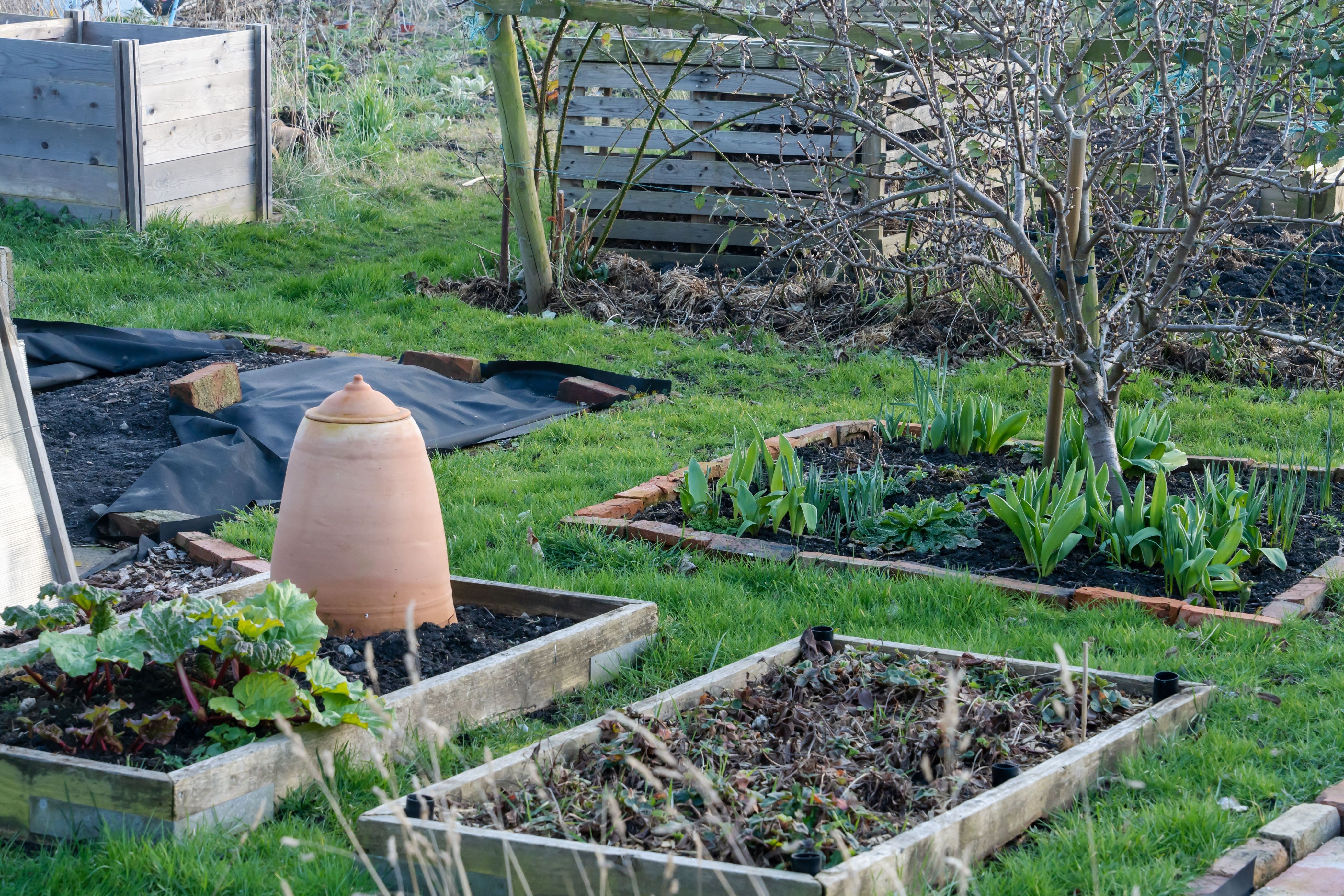
“But how to start raised beds in a sloping area? Is it even possible to do?”, you are probably asking yourself. To soothe your troubled soul, let's get right to the point. Yes, it is completely possible to build raised garden bed on uneven sloped ground. You’ll have to do a little bit of digging and leveling, that's all.
But why do you have to level your raised bed vegetable garden? Watering your plant on level ground is much easier. Watering on a slope raises the chance that the top soil will dry up before the bottom, dispersion of soil moisture and nutrients becomes inconsistent. If you want a fruitful garden, you must level the ground or at least level the raised bed in garden.
Follow these simple steps to build your raised garden beds on uneven ground:
- Measure the slope or unevenness of your ground with a level
- Choose the material you wish to use to create your bed, keeping in mind that wood is more flexible than metal.
- Make the bed level. You must use a leveling tool to determine if the bed is leveled.
- Place bricks beneath the edges of the box and inspect each side to ensure that it is leveled properly.
- Install vertical supports, such as wooden stands, for the bed.
- Fill up the gaps created by the installation of the supports.
- Set poles in the ground to prevent the bed from drooping.
- Fill the bed up with soil.
By following these steps, you should have a raised bed garden no matter how uneven your yard is! If you’re still confused, check out this detailed guide on making raised bed gardens on uneven ground.
Conclusion
Raised bed gardening is an efficient method for growing plants. This offers numerous benefits, such as better soil quality, improved drainage, reduced weed growth, and easier accessibility. We have gone into detail about every step of the process so that you can create your perfect raised bed garden. You can DIY it all yourself or go for some readymade options available on the market. Just remember to check your budget before jumping in. And in the next part, we will talk about how you can maintain your raised bed garden, what you can plant, and many other tidbits! So check that out! Happy Gardening.


